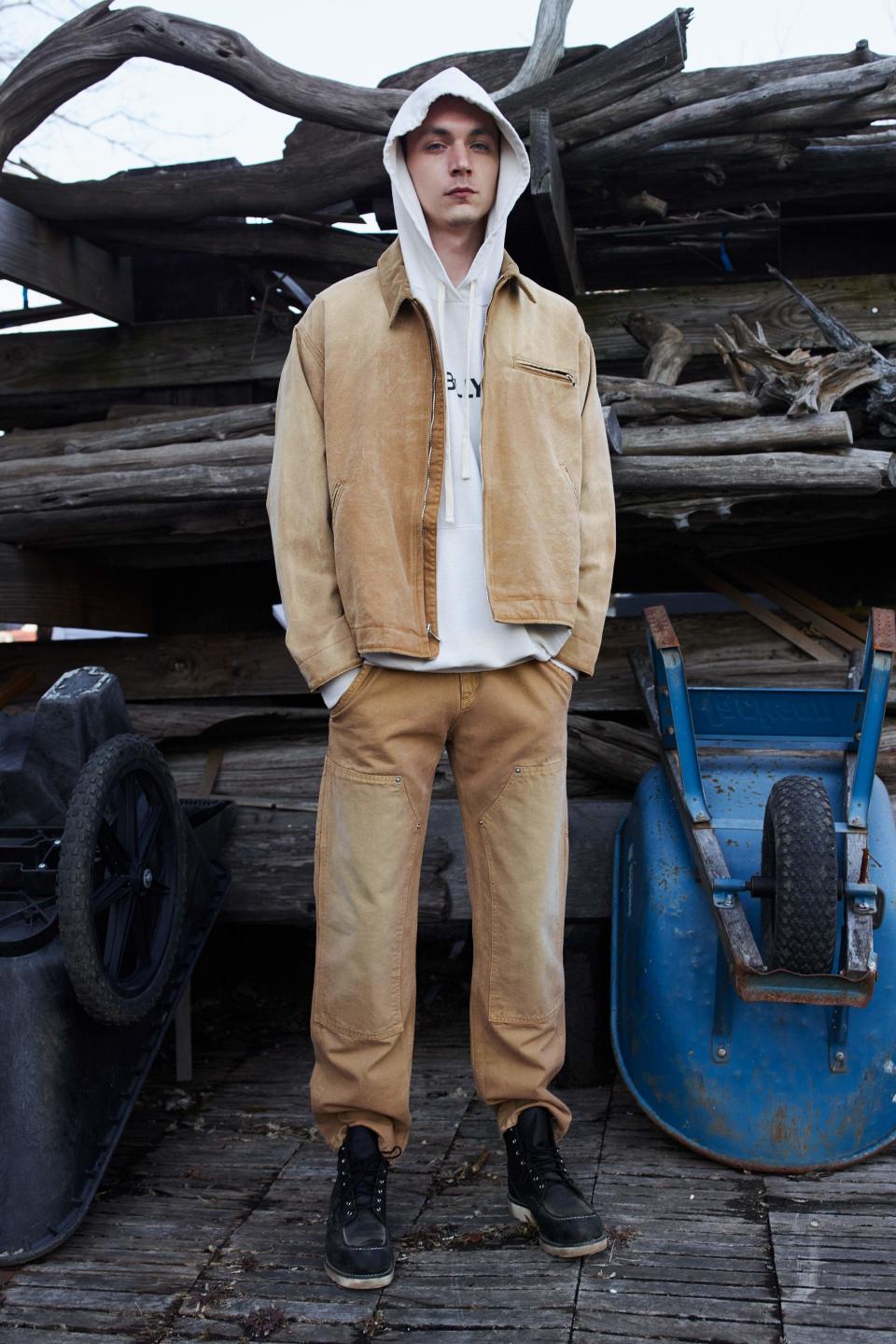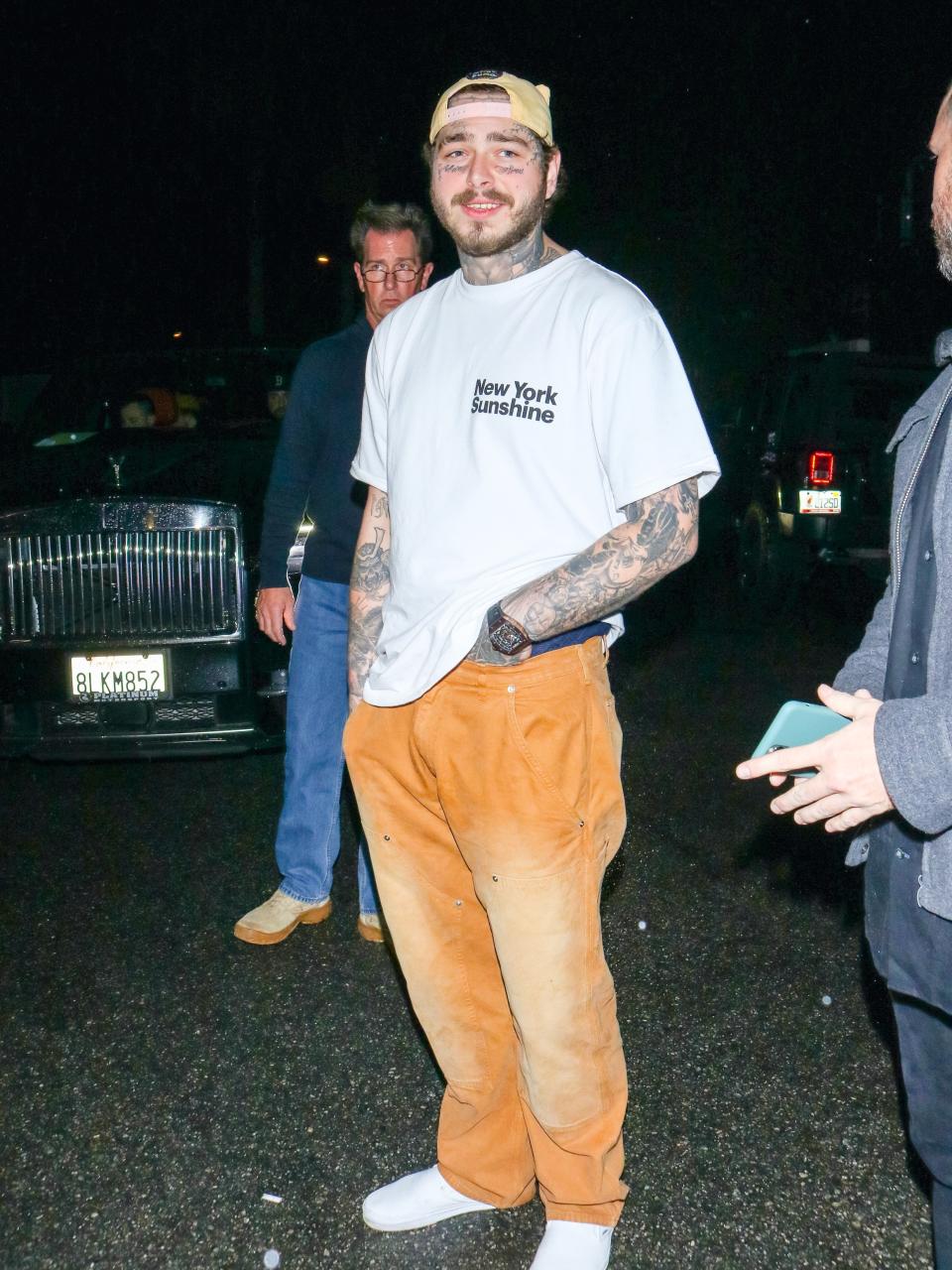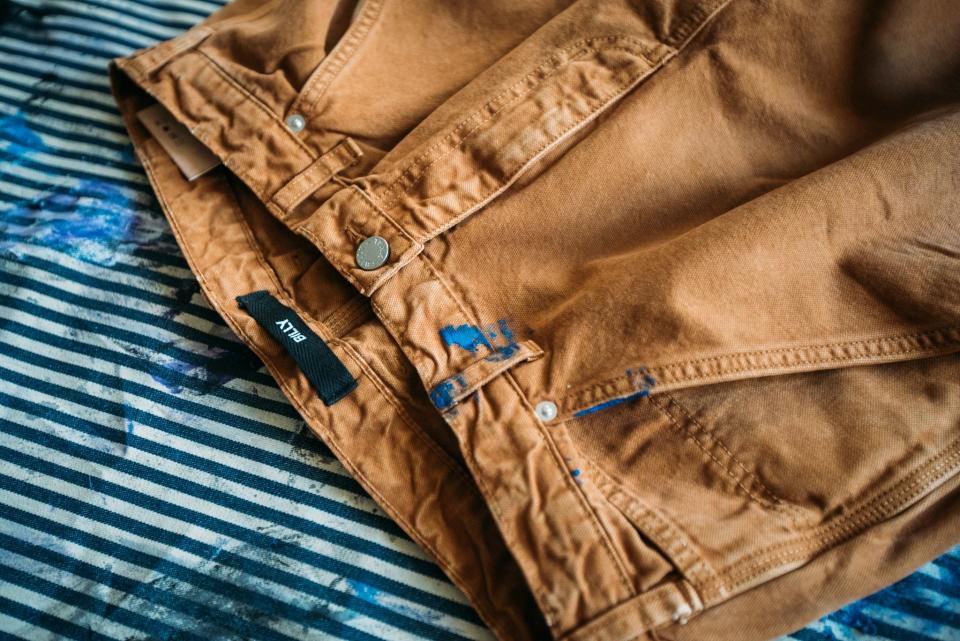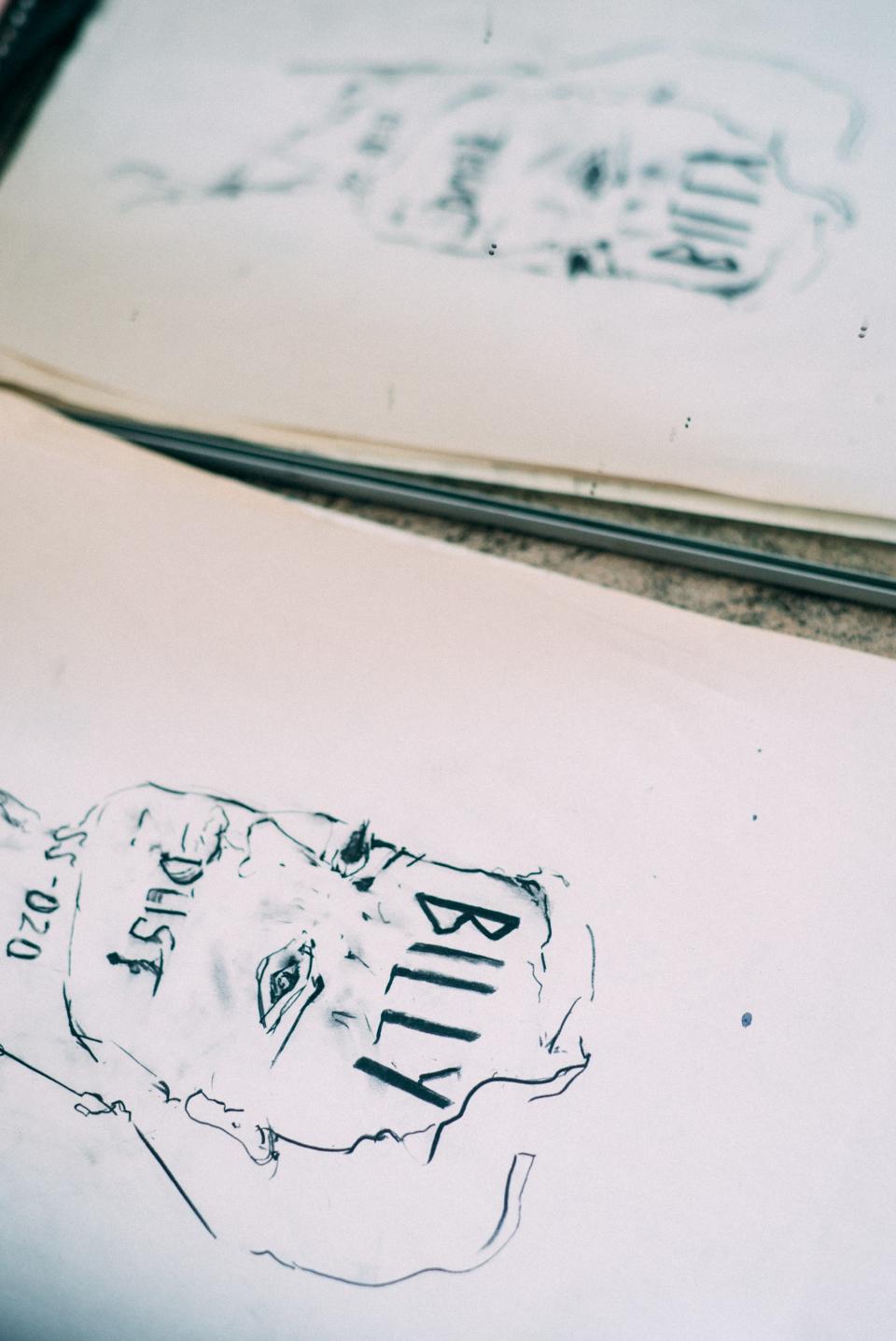Billy Los Angeles Is a Little Bit Country, a Little Bit Rock ’n’ Roll, and a Lot Beloved by Celebs
From legal weed to LeBron, Los Angeles has it all—including a thriving fashion and arts scene. We chat with some of the city’s most stylish tastemakers about how their creative endeavors are shaped by living in SoCal.
It’s no new thing for fashion designers to use bits and pieces of classic Americana in their work—a little bit of cowboy swagger here, some blue-collar workwear there, all sprinkled with military influence on top, and voilà: Fashion! Designer Holly Jovenall, who grew up on a farm outside of Pittsburgh and spent the early part of her career working at iconic early-aughts L.A. boutiques like Kitson, takes similar inspirations but comes up with a different result. Her brand, Billy Los Angeles, reimagines those menswear standbys with a darker, moodier attitude. In some ways, it makes her label feel perfectly in tune with the times, where masculinity and American identity are at a cultural crossroads. But Jovenall’s work emanates less from the political than the personal—pieces like her Carhartt-indebted work jacket spring from memories of her small-town childhood, flecked with nostalgia. To wit: The brand is named after her father.
Jovenall specializes in making the timeless and familiar (workman’s pants, rough-hewn trucker jackets) feel very much of this moment. With its lived-in, sun-faded take on archetypical men’s garments, Billy represents a movement away from the streetwear mania of the 2010s and toward a vintage-inspired vibe that’s currently cresting. “I’ve been building this character over the years,” Jovenall says one morning from her studio, overlooking downtown Los Angeles. She wears an oversize sweatshirt and a pair of slouchy cargo pants paired with heels, a surprisingly glam look for the head of such an ostensibly masculine brand. Jovenall explains that Billy allows her to synthesize a few of her favorite things: her childhood memories, imagined stories she writes, and an obsessive love of research and details of the design process. It’s for those reasons retailers like Mr Porter and SSENSE have flocked to her (not to mention celebrities like Justin Bieber and Post Malone are fans). And as she grows her business, outsiders may be surprised to learn that the brand is, still, essentially just her.
Jovenall spoke with us about the background and development of Billy, the struggles of running a business during these strange times for fashion, and what it’s like being a woman in the menswear world.



GQ: You grew up on a farm outside of Pittsburgh—what was it like? Did you like it?
Holly Jovenall: It’s definitely different than my life now. I didn’t know any better, so I loved it. I'm the middle child and I was always the adventurous one, constantly exploring in the woods making up things in my mind. I didn’t really know about “fashion” until I was in college, but I was always into it. I would design outfits for my sister and I to show horses in. I think I always dreamed of living outside of there, though, because as soon as I turned 17, I left.
Was your high school super small?
I graduated with about a hundred people. But a lot [of Billy] stems from that. I have an older brother, and he was an athlete—and I always dated athletes. And bad boys in small towns are actually bad boys…and I was definitely known to date the bad ones [laughs]. I find a lot of my design sensibilities now stem from the way that those guys wore clothes: like their undershirts with work pants. They'd come out of football practice and they'd have their jerseys on, throw work pants on, and then go out to fix cars or go to their farm and do farm work.
And you studied fashion in college and then moved straight to L.A. after school?
I was just obsessed with and dreamt of L.A. I just thought L.A. was where I should go.
Had you been there before?
My uncle was in Temecula, so I came out on a spring break a couple of years before that. He brought me to Beverly Hills, took me to Tiffany and got me a necklace, and then we went back. So like a day trip. And that's it.

Celebrity Sightings In Los Angeles - December 04, 2019
So what drew you here, rather than New York, which seems like the place most people go to work in fashion?
L.A. just seemed like the total flip of anything I've ever experienced. It was before social media and stuff, but I saw L.A. as [home to] this very cool, kind of grungy, laid-back skate culture that I was really drawn to. At that time I was designing womenswear more, and it just felt completely brand-new.
You worked in visual merchandising, styling, and creative consulting before you started Billy. When did you make the decision to start a brand?
My boyfriend at the time owned this really cool store, a skate shop on Melrose, and I learned a lot from being around the skate culture. I would take those references and started reworking vintage, and it just grew from there. That’s when I started to really, fully understand myself. I’m glad I had that background of luxury and that stuff. The vintage could only last so long, and I love business, so I started making T-shirts. So my first thing was the Joseph tee, and then sweatpants and sweatshirts, because it felt cool and laid-back and something accessible that I could afford to make. And then it went from there because I have, like, 50 million ideas. I could design a runway collection right now.

You told me about how, when you first launched Billy, you put it up on social media and [stylist] Karla Welch immediately reached out and pulled some stuff for Justin Bieber. Did that make you feel that, right away, you were on the right path? Were you always confident people would get your vision?
I’m nervous all the time. What I'm doing is completely vulnerable. It's my life that I'm talking about, and it's really intimate. And I’m a woman in menswear—not that that matters. I don't know what you guys fully like, and I don't know how the world's going to take my vision. I'm really trying to put out the way I see Americana, which is a darker side, a more avant-garde approach to it. You know, it's not Ralph Lauren, it's not the heritage companies we're used to. It's humbling to have someone like Justin fuck with your stuff, to see your vision and get it.
You pull from a lot of male archetypes and uniforms—military, workwear, sports jerseys, Western wear. Really iconic garments. How did you develop your style?
With Billy, it has to feel real to me. It’s my brand; I’m not working for someone else. And I know this brand like the back of my hand. You see trends come and go, but I don’t really plan on swaying any way but to where I can do my best work. To me, that’s vintage-inspired pieces, military, things that I know well because I was constantly around it. To me, that’s an aesthetic. It’s a way of creating these memories: How do I take all of that and make it feel brand-new and individual to the person wearing it?
So what’s your design process like?
My design process actually starts with writing. Because I’m a woman, I have to think from a guy’s perspective. Like this next collection is a little bit about heartbreak, so this guy packs his bag and goes to his cabin in the woods. But I have to go through those emotions. I have to touch on heartbreak I've had in my life. So I sit down and I write. Like: How's the sky changing? What truck is he driving? How does he smell? Did he shower today? Is he waking up to the sunset? Is he stopping at the bar? What's he drinking? I just kind of go through all of that. And it might be thinking about an ex-boyfriend or someone that I saw at a dive bar.
And then I’m always just playing with fabrics and textures. I want things to have a really natural-looking wear and tear. Then I sit down with my pattern maker—I work with a smaller atelier in Eagle Rock, but I’ll do some pattern work on my own. I’ll do smaller details or pockets myself because it’s too hard to explain.
Your fabrics look worn-in but also really substantial and heavy.
I like to work with more rugged, heavier fabrics because one, I want to make pieces that you can have forever. Two, I do a wash process on everything I make. I'm hand-sanding and I'm going in with my seam ripper and I'm doing all the distressing by hand. Everything takes an overdye. My fabrics need a good grain to them so they can get that super-chic, worn-in feel. I don’t want things to look vintage, but like I put the wear and tear in for you.

All those really subtle details are evident when you see it in person. Are those details challenging to convey through digital images?
I mean, I’m dealing with the challenge of growth. Right now I’m a one-person team. I wish I had more time to do film, to show movement, to work on social media and content. There’s a life I’m building, and it’s not happening in a flat shot. That’s something I struggle with. But I want this story to last forever, so I’m patient. And there have been people who’ve worn Billy since day one, and once guys do get it, they come back. They’re the ones spending a thousand dollars to re-up on T-shirts and sweats, to buy the dad jacket.
And that’s why, like, with the celebrities who wear the brand, it’s all organic. Like G-Eazy, he’s my homie. That’s the moral of the brand: family and unity. The qualities that I was raised with, that’s the heritage of my brand. And one day I hope we can have this big family dinner together.
Earlier you said that being a woman in menswear doesn’t really matter, but I don’t know if I agree. Tell me your thoughts on it.
I get asked this a lot. And I try to say that it’s nothing, but it’s hard. Listen, menswear is…it’s a boys’ club. It’s very tight-knit. There are different groups that support each other, and I'm just coming out of left field. I haven't been in the menswear space, so I think that breaking down those walls to be like, Hey, I'm here. I know what I'm doing—it's been hard, I'm not gonna lie. Mike Amiri has been really kind to me, and he's been a really great mentor, calming me down and just saying, like, You're doing the right thing, just keep creating. So I do have really awesome support.
I think I have a great take on how men should dress, and that's why building the brand is going to be super exciting over these next few years. Because I know what women want to see guys wear, what guys want to see guys wear. I mean, I design for a guy I would want to be with. I'm not gonna sit here and say it's not hard, but it's hard whether you're a guy or a girl to start your own brand and get people around the world wearing it. I never thought it was going to be easy.
What’s been the most exciting thing about launching your own brand?
Obviously, Justin [Bieber]—that was fucking major. But also Mr Porter, because I wasn’t even a year in. I missed my meeting with Sam [Lobban, former menswear buyer at Mr Porter], so I flew back to show it to him. To me he’s the number one merchant in the industry, so just to hear his feedback was amazing. And he said, "I love what you’re doing, let’s revisit next season." And I was fine with that, I had literally just started. And then a few weeks later they reached out and said, "We can’t wait, let’s do an exclusive." To get that kind of feedback from someone you respect in the industry like that was amazing.
What’s been the hardest part?
Building the business. I’ve wanted to quit 50 million times. I know how to do business, but to run a business, it’s a lot. And I’m learning every day. I’ve had so many roadblocks. Like last August, I had a factory completely fuck me over—I didn’t know what to do. It was…hard. Even things like making sure I have enough money to do another collection right now. And how do I do that with limited funds and make sure it’s up to my standards? Because I won’t lower my standards.
Why do you think guys like your clothing?
The guys close to me, someone like G-Eazy, have been complimentary about the fit and the “understated coolness.” I think the biggest thing—even in DMs I get—is this understated approach that I take. I posted a photo and someone just wrote, “That’s so relaxed and cool”—and it was just a picture of my nephew wearing one of the hoodies. Guys often talk about the fit, and that means a lot to me because I work on that—it’s so important to me. Look, my guy shouldn’t be taking more time to get ready than I do. That’s why I design the way that I do. This is stuff that you can throw on and immediately be cool. It’s the guy you see in the coffee shop and you want to know more about him. He has that effortless confidence and doesn’t feel like he needs to proclaim who he is all the time. I want people to take Billy and wear it how they want.
This conversation has been edited for length and clarity.
Originally Appeared on GQ

